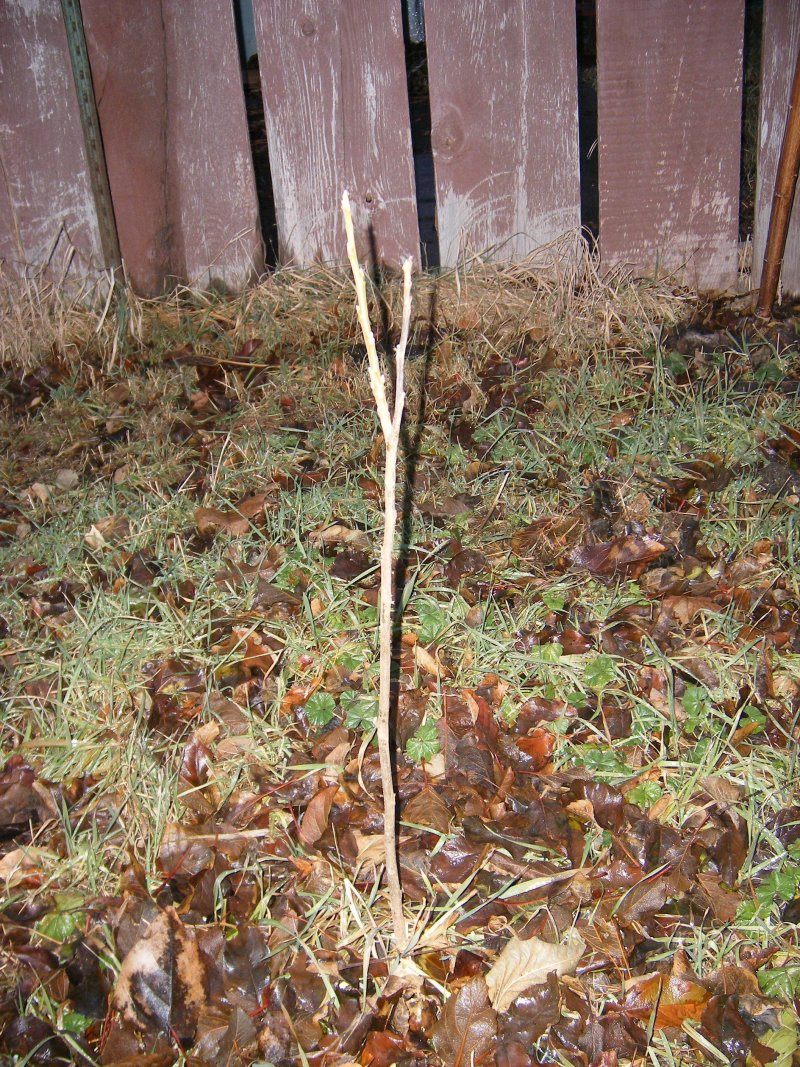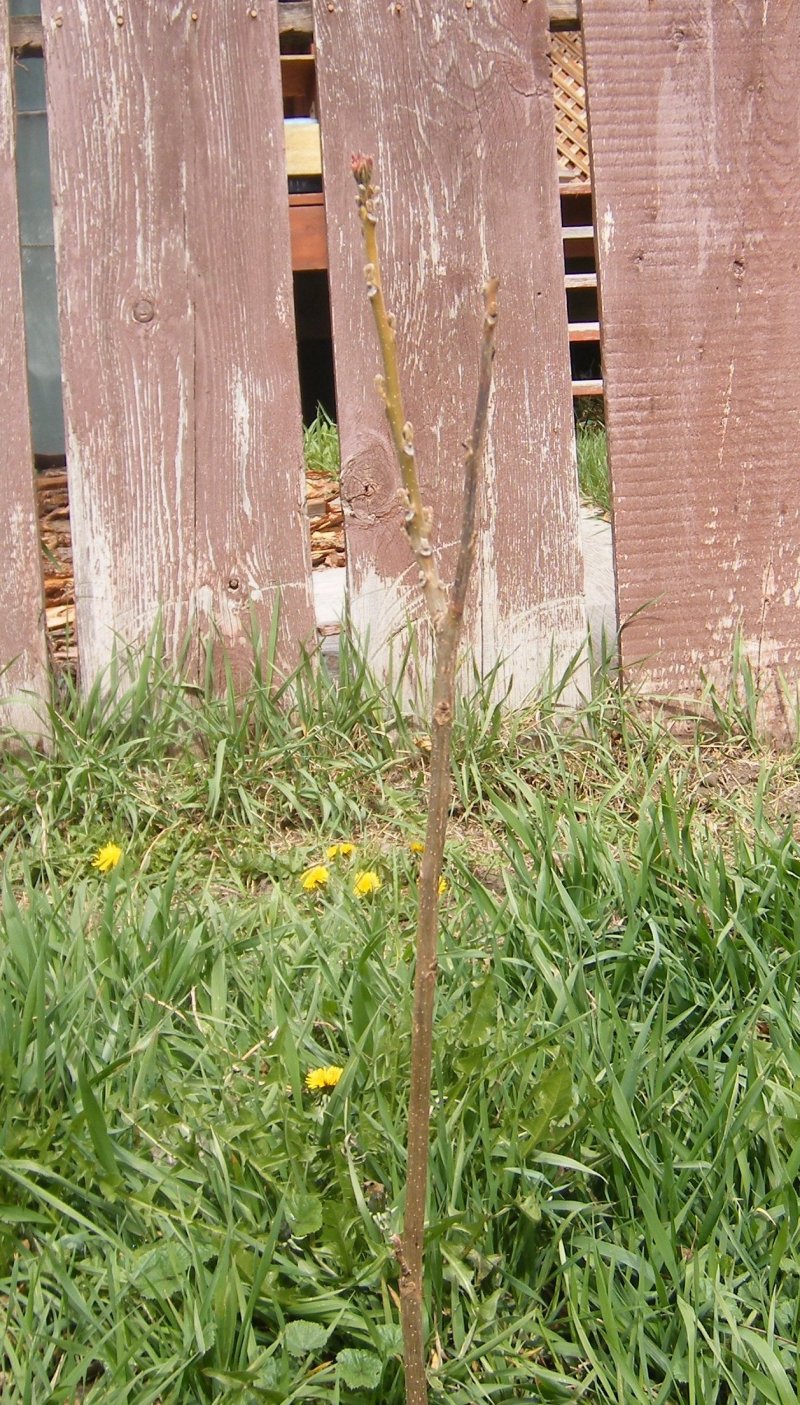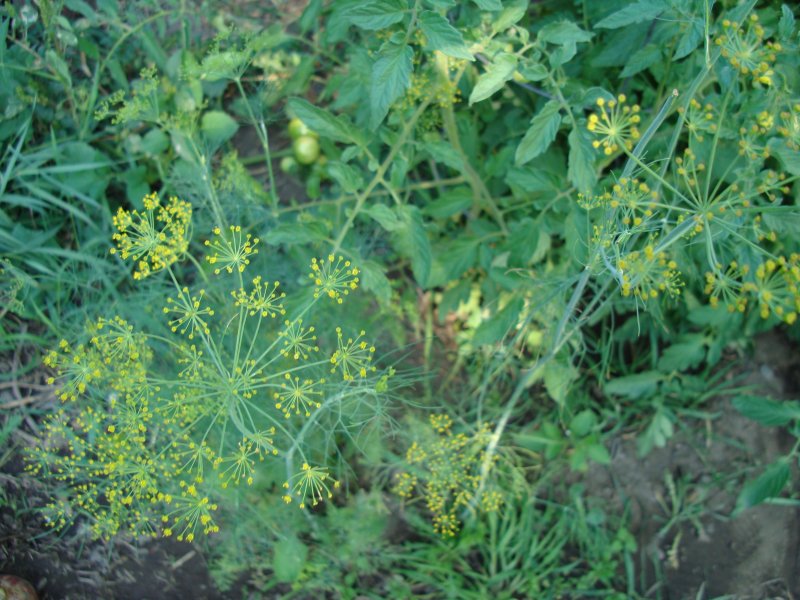
But by April 30, 2007
the walnut tree was starting to show new
signs
of growth:

By
August 23 of 2007 you can see it is doing quite well again:
More limbs survived the winter of 2007/2008 as you can see in the
February 18, 2008 picture below:
Buds were just starting to form on the walnut tree when I planted the
lettuce and other seeds around it on April 11, 2008 as you can see in
the image below:
On June 10, 2008 we had a surprise late snow storm that collapsed the
walnut tree as you can see in the picture below:
This freak snow storm
also nearly burried the Reuben's Red Lettuce
which is barely visible on the left side and along the bottom right in
the picture above. When I first saw it, I thought the tree was a gonner
but it sprang right back up as soon as I shook the snow off as you can
see below:
By the Forth of July, 2008 the walnut tree was doing quite well and
looked like it might be giving the sunflowers a run for the money:
In the picture above, the green metal fence post on the far left is
47.5 inches (121 cm.) tall as is the fence post behind the sunflower on
the left.
By August 16, 2008 everything had gotten so lush that it was difficult
to tell what is what:
On the left you can see the same fence post and to the right of that,
toward the front, you can see the Formidana Lettuce at
50 inches (127 cm.) tall and,
behind it, the
52 3/8 inches (133 cm.) tall
Reuben's
Red Lettuce. You can also see a couple other Formidana Lettuce plants
which are over four feet tall. To the right of the tallest Formidana
lettuce plant you can see a
large sunflower. Just to the right of the large sunflower is the Black Walnut tree which was 70.5
inches (179 cm.) tall when this picture was
taken.
Volunteer Sunflowers
The largest sunflower, in the picture above, is 90 inches tall and has
a 15 inch flower head:
It was a volunteer plant from last year's seeds.
The flower head on the 2008 sunflower above is an inch wider than the
flower head of the largest sunflower I measured on August 23, 2007
below:
In ORMUS Problems
I mentioned earlier that there have been some problems that may be
directly related to using ORMUS on the plants in my yard and garden.
The soil that has been treated with ORMUS is quite loose and aerated
due to the presence of lots of earthworms, the mycorrhizal fungi and an
abundance of beneficial bacteria. This loose soil apparently does not
provide enough support for the roots of the sunflowers to keep them
from falling if they lean too far over while reaching for the sunlight.
One of the sunflowers fell over on August 3, 2008 right after I watered
that part of the garden. You can see a picture of the root wad of this
sunflower below:
Notice the
incredible abundance of the white mycorrhizal fungi fibers attached to
every root.
I think that something similar may have allowed some of the big dill in
the picture at the top of this web page to fall over.
Apricots
Another problem might also be related to the application of ORMUS to
plants. When ORMUS is applied to older trees, their limbs may not have
developed the strength to support the extra weight of the fruit or nuts
that they produce. This was apparent in the summer of 2008 when an
older apricot tree had a particularly abundant crop of apricots after
being given sea water precipitate ORMUS for only the previous four
years of it's twenty plus year life. Here is a closeup image of the
broken
branches of this apricot tree taken on August 9, 2008:
Here is an overview of the entire tree taken on the same day:
Notice the dog across the fence in the lower right corner of the
picture above? This is one of the dogs that guards my neighbor's
apricot tree. Their tree did not have as many apricots on it as my tree
did. Here is a picture of my neighbor's tree taken on July 27, 2008:
One reason that their tree did not have as many apricots may be that my
guard cats did a better job of keeping squirrels from stealing the
apricots than their guard dogs did. In the lower right picture below
you can see one of my guard cats:
Here is another picture of them guarding the apricot tree in
2007:
Though he looks quite peaceful in the picture above I recently got a
video of the smaller guard cat attacking the dogs across the fence. I
am not sure that this is related to ORMUS even though I do put the Sea-Crop in the cat's
water.
In the closeup below is a picture of my neighbor's tree
taken on July 27, 2008; you can see how sparse their
apricots were:
I also have a closeup photo of the apricots on one branch of my tree.
This photo was taken on August 9, 2008:
I don't think that the squirrels, cats and dogs are entirely
responsible for the difference in the weight of the branches between my
tree and my neighbor's tree, though. In the months before the apricots
ripened on both trees, I took periodic pictures of several
representative apricots picked from the north side of each tree. Three
of these pictures are below:
The grid on the background
is
half inch square.
As you can see, the apricots from my tree have been consistently larger
throughout their growing cycle.
Summary
Though all of the plant stories above suggest major improvements when
sea water ORMUS is added to the soil, this evidence cannot truly
be truly called scientific. In each case at least
one component of the scientific process is missing. The apricot results
may be due to different species of tree since I do not know that these
trees came from the same source. These results may have been skewed by
the squirrels or the positions of the respective trees in relation to
sunlight.
We don't know for sure if the different squash plants are the same
species and they were grown across the continent from each other. The
plants in North Carolina were not even measured.
The before and after pictures of the cilantro and dill are from
different years. Also, I am not really sure that they don't typically
reach heights greater than they did in my garden.
The same is true for the lettuce heights. I am not sure what others are
getting with these plant breeds.
I do know that there are taller sunflower plants with larger
sunflowers but I am not sure how the breed of sunflower I have compares
to the breeds that get the largest.
All of these issues and more need to be accounted for in controlled
scientific research.
I do know that the food from my garden and trees sure tastes good. I
also know that I feel really good after I eat it.


